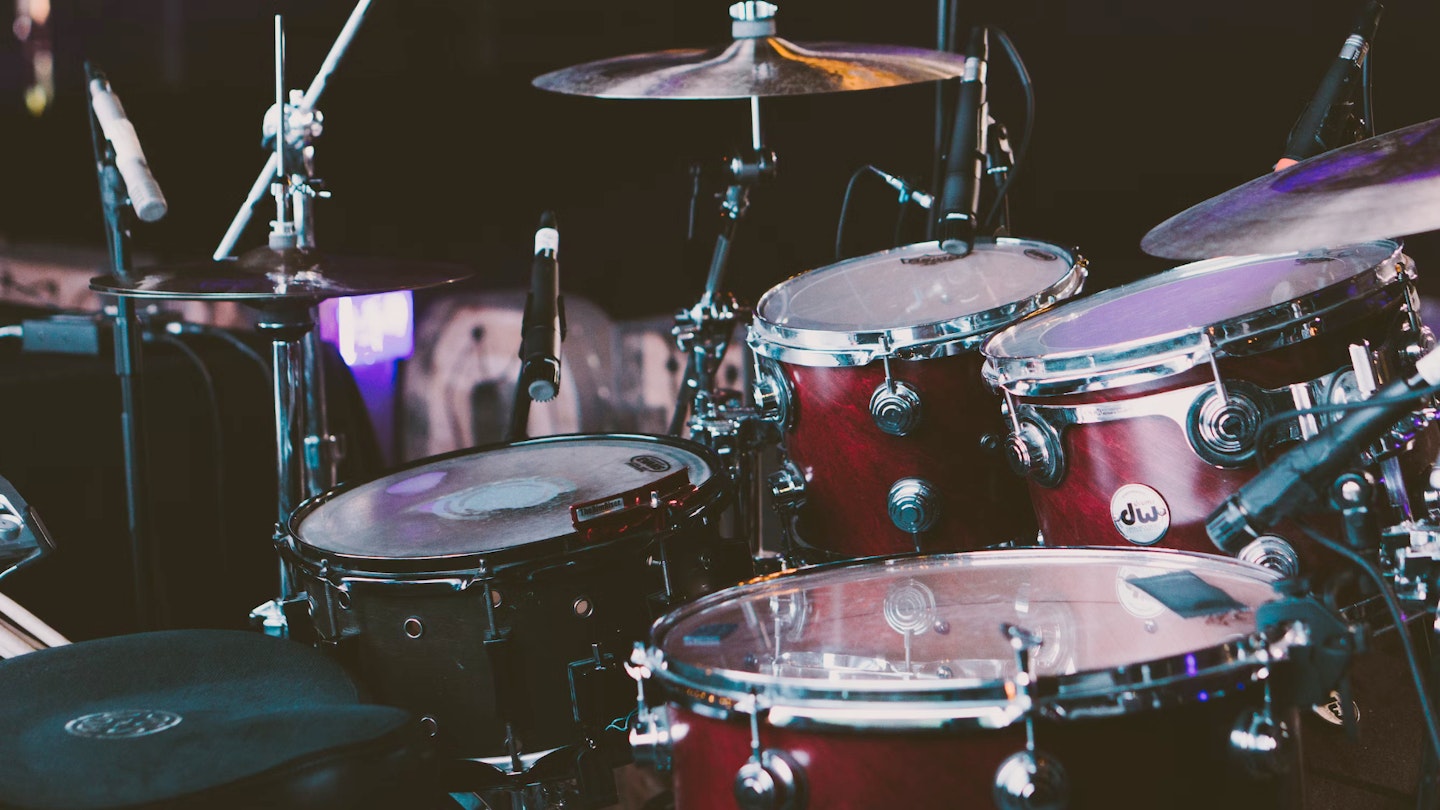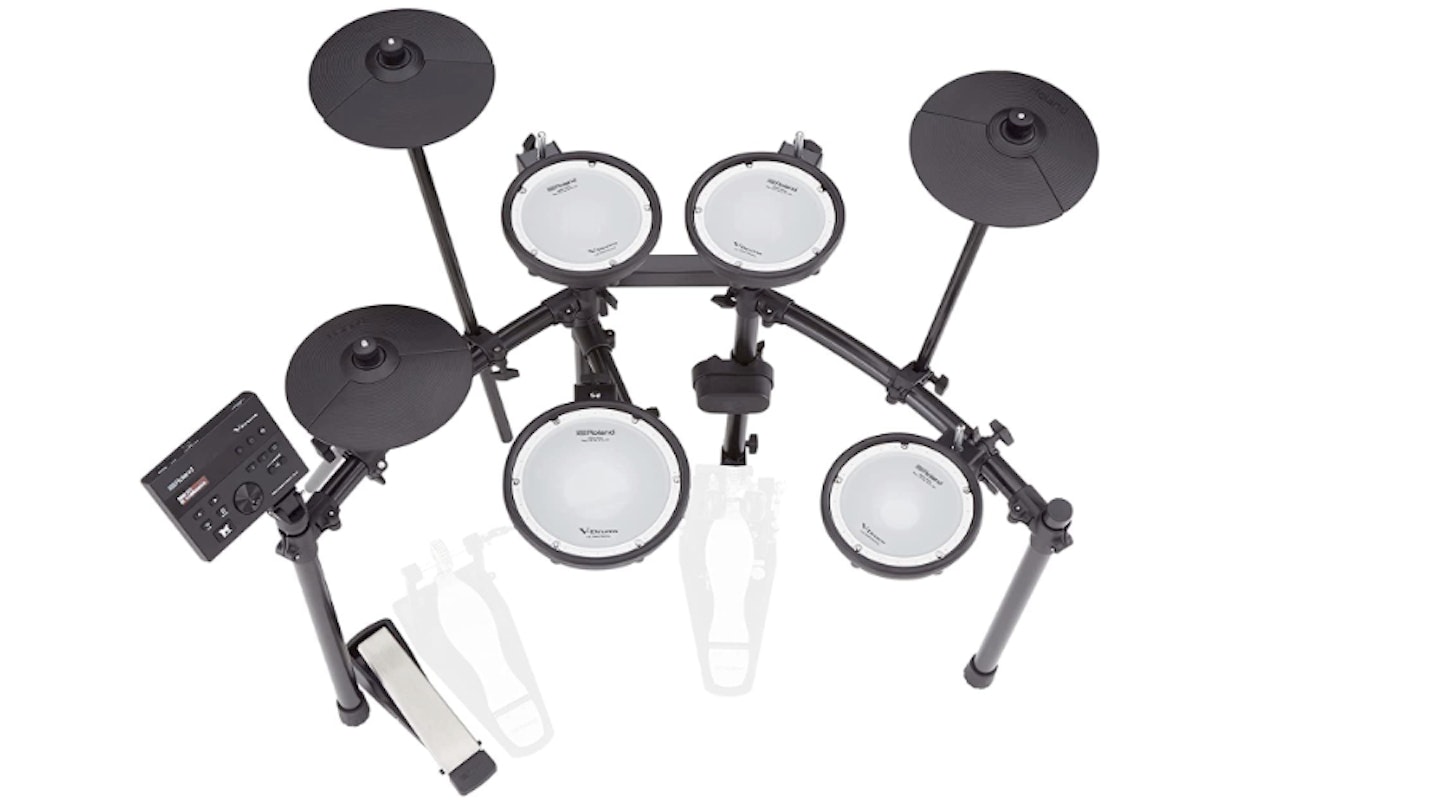A band is only as good as its drummer. Despite the wealth of bad drummer jokes out there, drummers are the backbone of any group. Imagine Led Zeppelin without the powerhouse of John Bohham behind the kit, Cream without Ginger Baker. With no disrespect to Kenney Jones or Zak Starkey, The Who simply wouldn’t have been The Who without the flailing rhythmic tour-de-force of Keith Moon.
Whether you’re a beginner just starting to explore the world of drumming or an experienced player looking to upgrade your kit, finding the right drum setup to suit your sound and style is crucial for your musical journey.
The best drum kits in 2023 at a glace:
• Best budget kit: Mapex Tornado III Rock Fusion Drum Kit - View on Gear4Music
• Best electronic budget kit: Roland TD-07DMK Electronic Drum Kit - View on Amazon
• Best rock kit: Tama Imperialstar 5pc Drum Kit - View on Gear4Music
From the kick drum to the hi-hat, each drum kit component contributes to its overall sound and feel. Whether you prefer the punch and projection of a rock kit or the versatility and articulation of a jazz setup, the right drum kit can unlock your full potential as a drummer and inspire you to create unforgettable rhythms.
In this guide, we have curated a selection of the essential drum kits available in 2023, as we have before with electric guitars and bass guitars. But before diving into the world of drum kits, you need to consider a few factors. Ask yourself what style of music you play. Are you drawn to the thunderous energy of your Bonhams and Moons, the intricate patterns of jazz drummers like Buddy Rich or Art Blakey, or the groove-driven shuffle of a player like Bernard Purdie, whose magic can be heard on records from James Brown to Steely Dan? Understanding your musical preferences will guide you towards the drum kit that can deliver what’s right for you.
Also, think about where you’ll be playing the drums. If you primarily practise at home or have limited space, a compact kit with smaller drum sizes or an electronic drum kit may be ideal. On the other hand, if you frequently perform live or record in a studio, you might want a larger kit that offers more projection and tonal versatility.
Remember to listen to your instincts and trust your musical taste. Drumming is an art form; finding the drum kit that resonates with you is personal. Take your time, explore different options, and don’t hesitate to seek advice from experienced drummers.
The best drum kits in 2023
The best budget drum kit
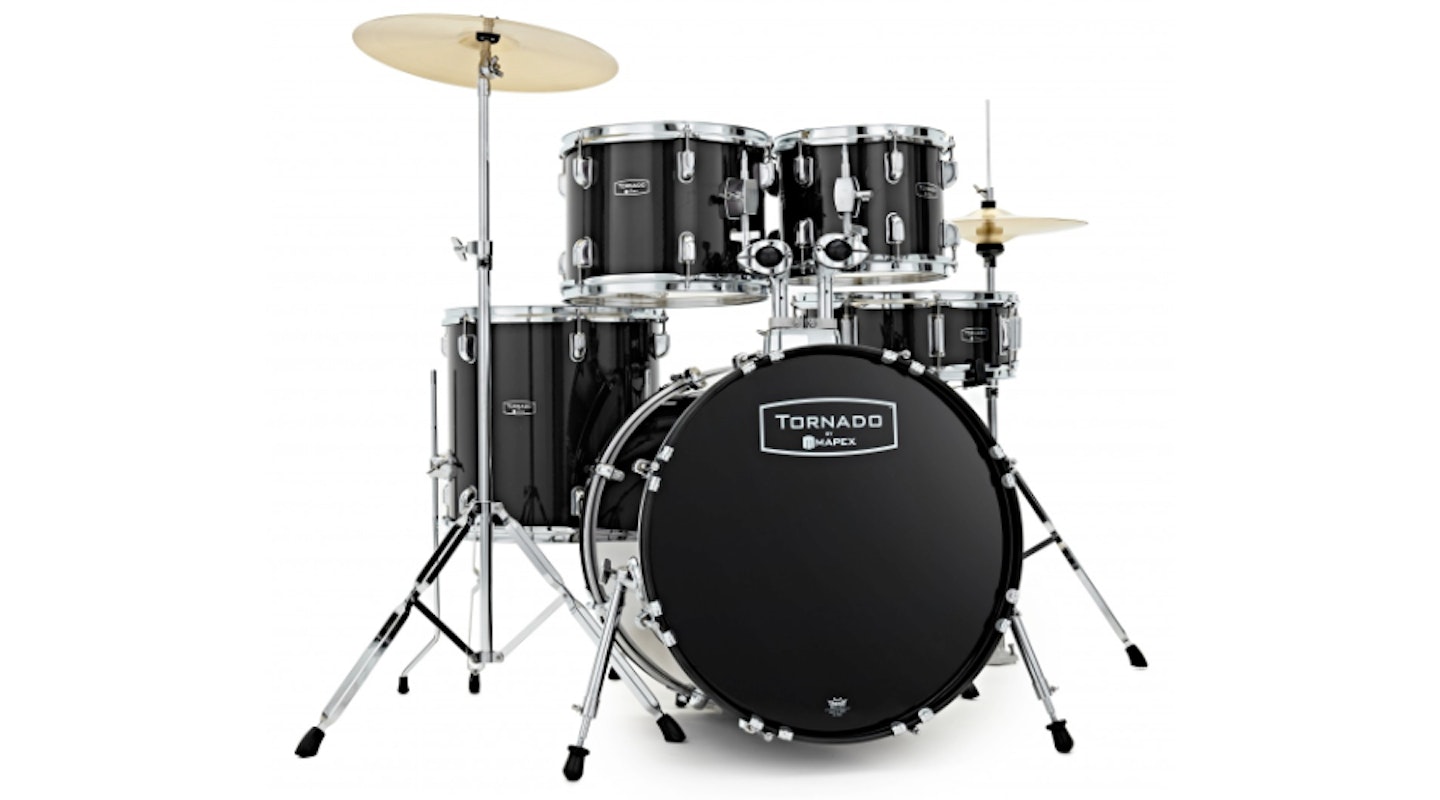
www.gear4music.com
The Mapex Tornado III Rock Fusion Drum Kit is a great option for drummers who want a powerful and versatile rock kit without spending too much. The 10", 12", and 16" toms are all the perfect size for rock drumming, and they provide a wide range of tonal options, while the 14" x 5" snare drum is a great all-rounder, with a sharp crack that cuts through the mix. The 22" x 18" kick drum is big and powerful, with a pleasing low-end wallop.
The Mapex Tornado III Rock Fusion Drum Kit also comes with lots of extras, making it a great pick for newcomers wanting an all-in-one package. The Omnisphere tom holder ensures that your toms are always perfectly positioned, and the included drum throne, pedal, snare, boom, and straight stands provide everything you need to get started.
If this base kit tickles your fancy but you’re looking for a few more pieces, there are options available with additional cymbals and alternative skins.
Pros
- A reliable five-piece entry-level kit
- Hardware included
- Classic rock kit size
Cons
- Cymbals are basic - crash/ride in particular will want an upgrade at some point
| Shell | Basswood |
| Sizes | 22" x 16” kick drum, 10" x 7” and 12" x 10” rack toms, 16" x 14” floor tom, 14” x 5 snare |
| Hardware | 200 series double-braced stands |
| Cymbals | 14" hi-hats, 18" crash, 20" ride |
| Other features | mnisphere tom holder, drum throne, pedal, snare, boom, and straight stands |
The best electronic drum kit for beginners
The electronic drum kit has come a long way. No longer the plastic-y hexagonal pads seen getting a hammering in the background of a 1980s pop video, they are now a compelling alternative to full acoustic kits. They are especially attractive to home-based drummers who don’t want to annoy their neighbourhood as they practise their paradiddles for the sixth-hundredth time this week.
Enter the TD-07DMK – the perfect drumkit for beginners and intermediate players. It features a sturdy and compact design with three mesh-head tom pads, a mesh-head snare pad, three cymbal pads, a responsive hi-hat controller and a bass drum pad suitable for single or double pedals. The mesh heads consist of a tightly woven, durable fabric material that mimics the feel and response of traditional acoustic drum heads – the tension is adjustable with a drum key. They are highly responsive to your playing, capturing every nuance and subtlety of your drumming technique.
The TD-07DMK module - which is basically the computer brain of the kit - provides 25 built-in drum sounds, acoustic and electronic, including simulations of the iconic Roland TR-808 drum machine. There are also 25 slots for custom drum sounds, which you can build from over 140 percussive sounds available on the unit. The Bluetooth connectivity is also versatile, linking you to some quality headphones and speakers or MIDI units.
Pros
- Reliable and responsive
- Versatile sound library
- Perfect for practice at home
Cons
- Electronic drum sets are harder to expand
- Doesn’t feel as organic to play as an acoustic set
- Kick pedal not included - but they are easy to source
| Drum module | TD-07 |
| Includes | Snare, Tom x3, Hi-hat, Crash, Ride, Kick |
| Stand | Four-post type rack stand |
The best rock drum kit
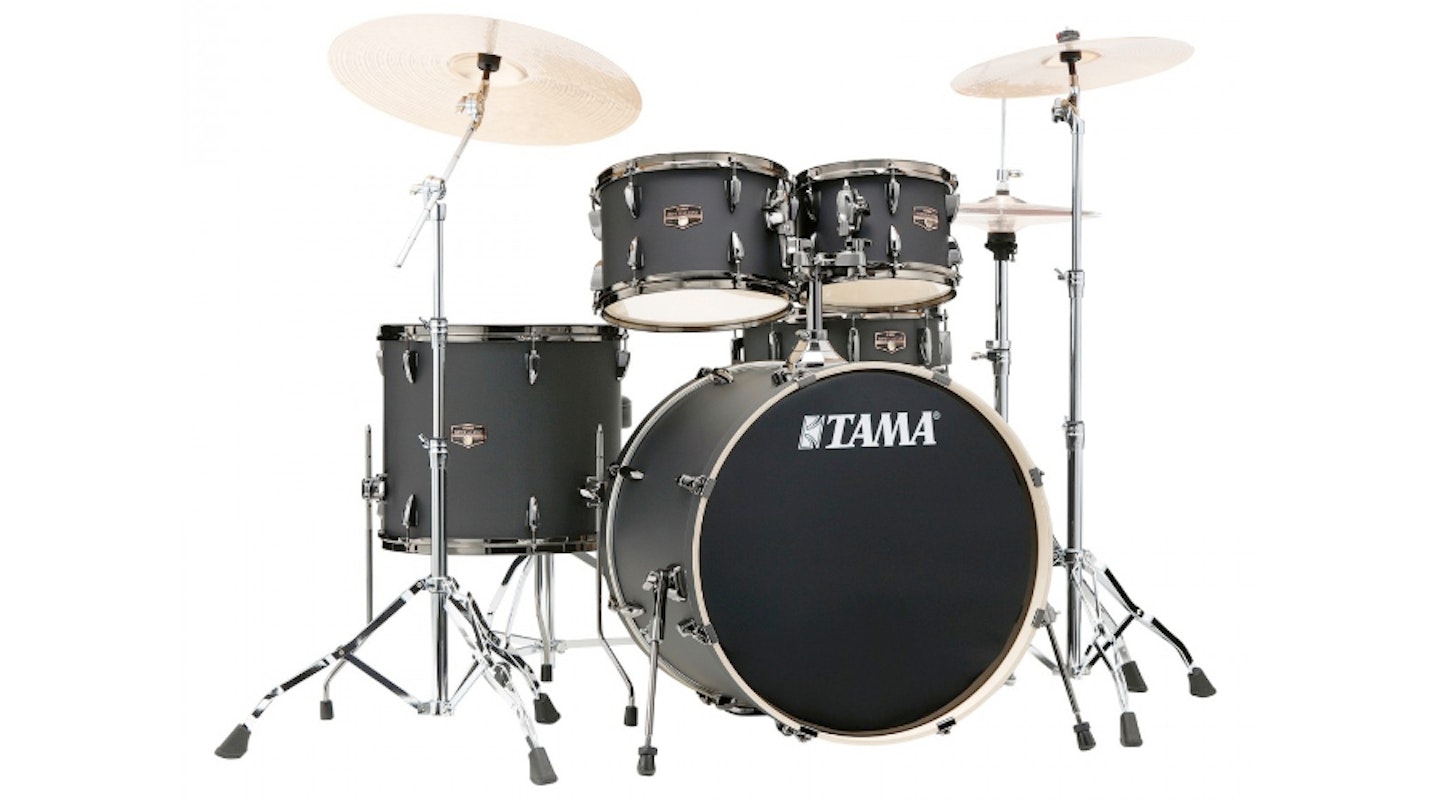
www.gear4music.com
The Tama Imperialstar is a perfect base for a rock drummer to start building their kit. The six-ply poplar construction of the drums gives them a powerful but balanced attack with a rich low end, helping draw attention to any fill that rolls around the 10”, 12” and 16" toms. Hitting the perfect size for rock is the snare, which at 14” x 5” inches gives an almighty crack, and the 22” x 18” kick, full of power and bottom end, giving a punchy presence during live performances.
Although the Tama Imperialstar 22” 5pc Drum Kit does not come with cymbals, it does feature an Omnisphere tom holder. This tom holder ensures precise positioning and offers excellent support for your toms. With this inclusion, you can achieve optimal setup and stability, allowing you to focus on your drumming performance. This kit includes the drum throne, pedal, snare, boom, and straight stands.
Pros
- Snappy snare
- Powerful kick
- Balanced and punchy tone from poplar construction
Cons
- Cymbals not included
| Shell | Poplar |
| Sizes | 22" x 18” kick drum, 10" x 7” and 12" x 8” rack toms, 16" x 15” floor tom, 14” x 5” snare |
| Hardware | Chrome hardware |
| Cymbals | None |
| Other features | Omnisphere tom holder, drum throne, pedal, snare, boom, and straight stands |
The best compact drum kit
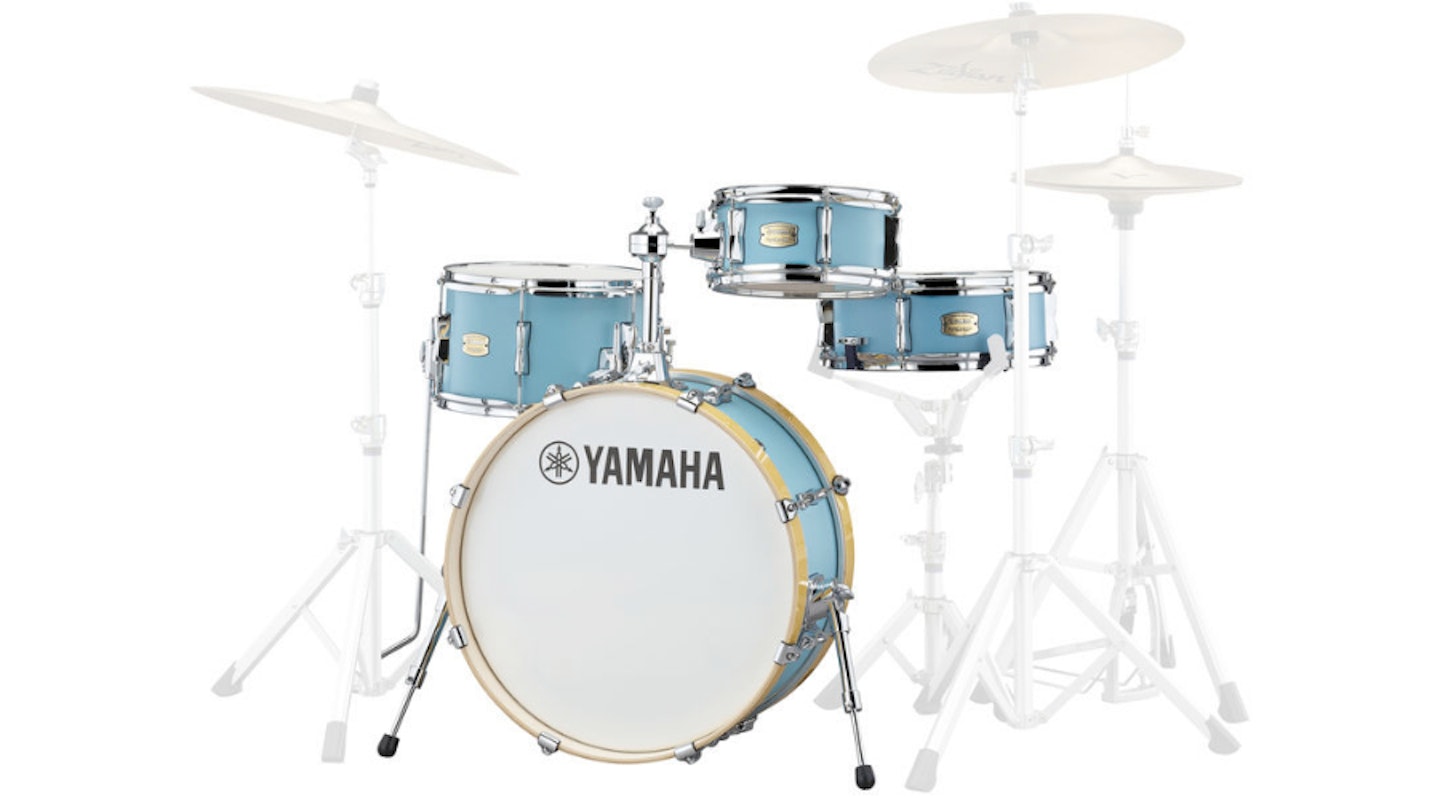
www.drumshack.co.uk
The Yamaha SBP0F4H Stage Custom Hip is a compact drum set with a reduced footprint that, despite its size, maintains a full and lively sound. It’ll suit anyone looking for a compact drum kit for the home studio or portability without breaking the bank.
Included in the kit are a 20” x 8” bass drum, a 13” x 8” floor tom, a 10” x 7” tom, and a 13” x 5” snare drum. The drums are birch, known for their warm and focused tone, with excellent projection, clarity and attack. Perfect for snappy rhythms and driving fills.
The Stage Custom Hip is touted as a jazz and pop kit because of its light and tight sound. But it’s more versatile than that, with all the punch and articulation needed for beginner and intermediate players across the genres, including rock. Just note that cymbals and hardware are not included.
Pros
- Compact set
- Tight sound profile
- Durable construction
Cons
- No hardware or cymbals included
| Shell | Birch |
| Sizes | 20" kick drum, 10" and 7" rack toms, 13" floor tom, 13” snare |
| Hardware | Chrome hardware |
| Cymbals | None included |
| Other features | No hardware included |
The best electronic drum kit
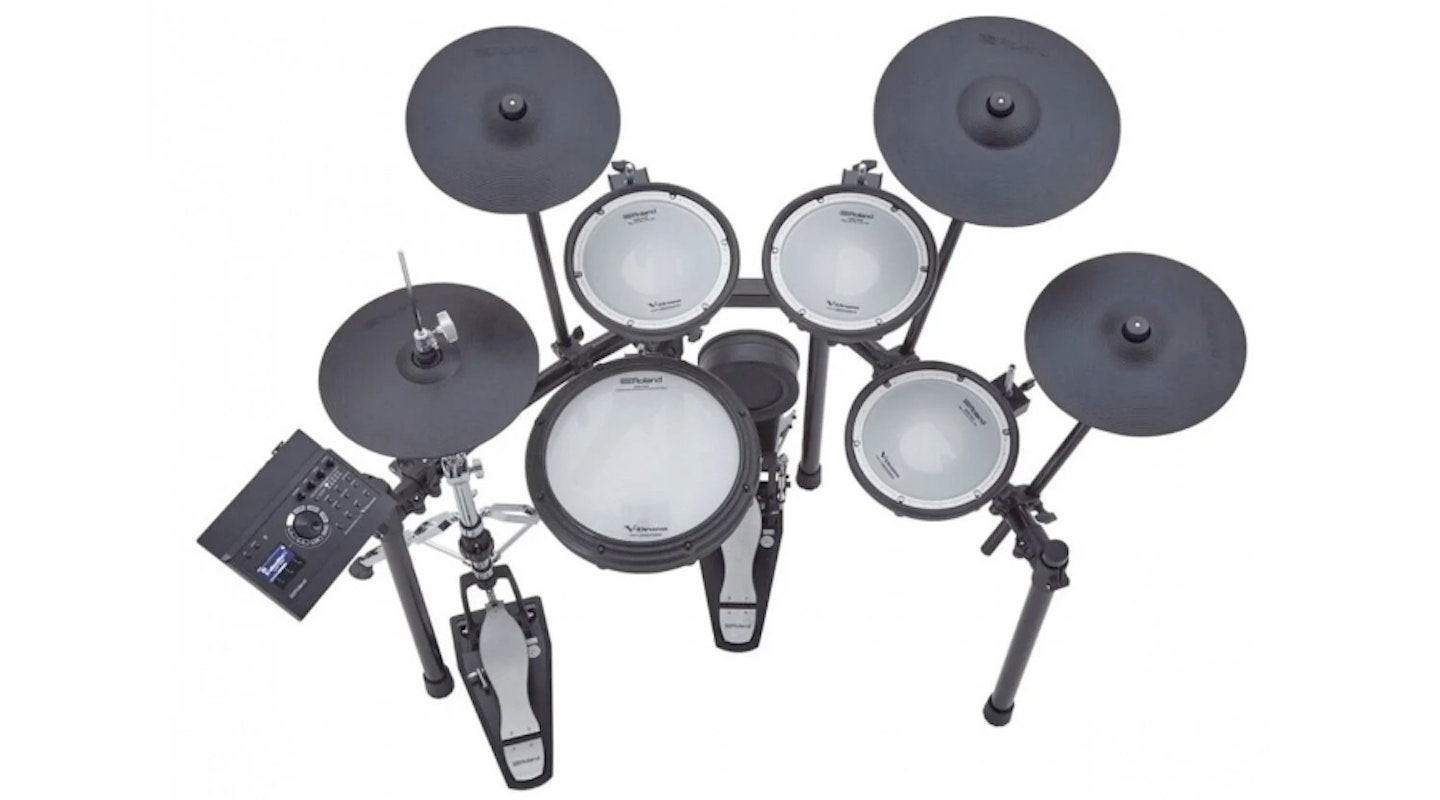
www.pmtonline.co.uk
The Roland TD-17KVX2 is a superb electronic drum kit that combines the playability of an acoustic set with the convenience and versatility of an electronic set. The PDX-12 snare is a real highlight, with its double mesh head that uses two layers of material to create a quieter and more natural-feeling drumhead. The drum’s sensitive sound sensor allows for expressive strikes, so you can throw in flams and ghost notes to your heart’s content. The rim on the snare also has sensors, allowing for rim shots and cross-stick playing. The three 10" toms also have excellent sensors and rim triggers.
The mountings of the cymbals – two crashes and a ride – allow the pads to move naturally, getting you closer to the feeling of an acoustic set. The 12" hi-hat also has floating mounts compatible with conventional hi-hat hardware – so you can play them just as you would normal hats – although the stand isn’t included in the package. The kick drum pad is designed to provide a solid feel, accurate and expressive triggering, and can accommodate single or double bass drum pedals.
The central processing until and sound module of the TD17KVX2 is the TD-17 - and it’s a little gem. For starters, it contains 70 premium preset drum kits plus space for custom builds, where you can use a three-band EQ and layer with over 300 individual drum sounds to create impressive and unique sounds. WAV files are importable for even more customisation via an SD card, which can record up to an hour of playing for a streamlined home-recording experience. Effects carried include reverb and compression, muffler and buzz. Connections include Bluetooth, MIDI, headphones and analogue outputs.
On top of letting you explore your sound, the TD-17 is great for honing your skills. A Coach Mode and Time Check mode can help you practise your rudiments and timekeeping.
Electronic drum kits are on the market for much higher prices than the Roland TD17KVX2 V-Drum Kit, offering even more realistic playing and comprehensive modules. But for us, those are for the professionals. The TD17KVX2 hits right in the sweet spot, offering incredible playability and a potent feature set for the intermediate drummer. Considering how many sounds this thing packs, it’s probably the only electronic drum kit you’ll ever need.
Pros
- Realistic playing on drums and cymbals
- Excellent sound module
- In-built tutoring for improving fundamentals
Cons
- Hi-hat stand and kick pedal not included
- We’d have liked a larger diameter floor tom for realism’s sake
| Drum module | TD-17 |
| Includes | Snare, Tom x3, Hi-hat, Crash x2, Ride, Kick |
| Stand | MDS-Compact |
Hardware and Cymbals
The best budget hardware pack
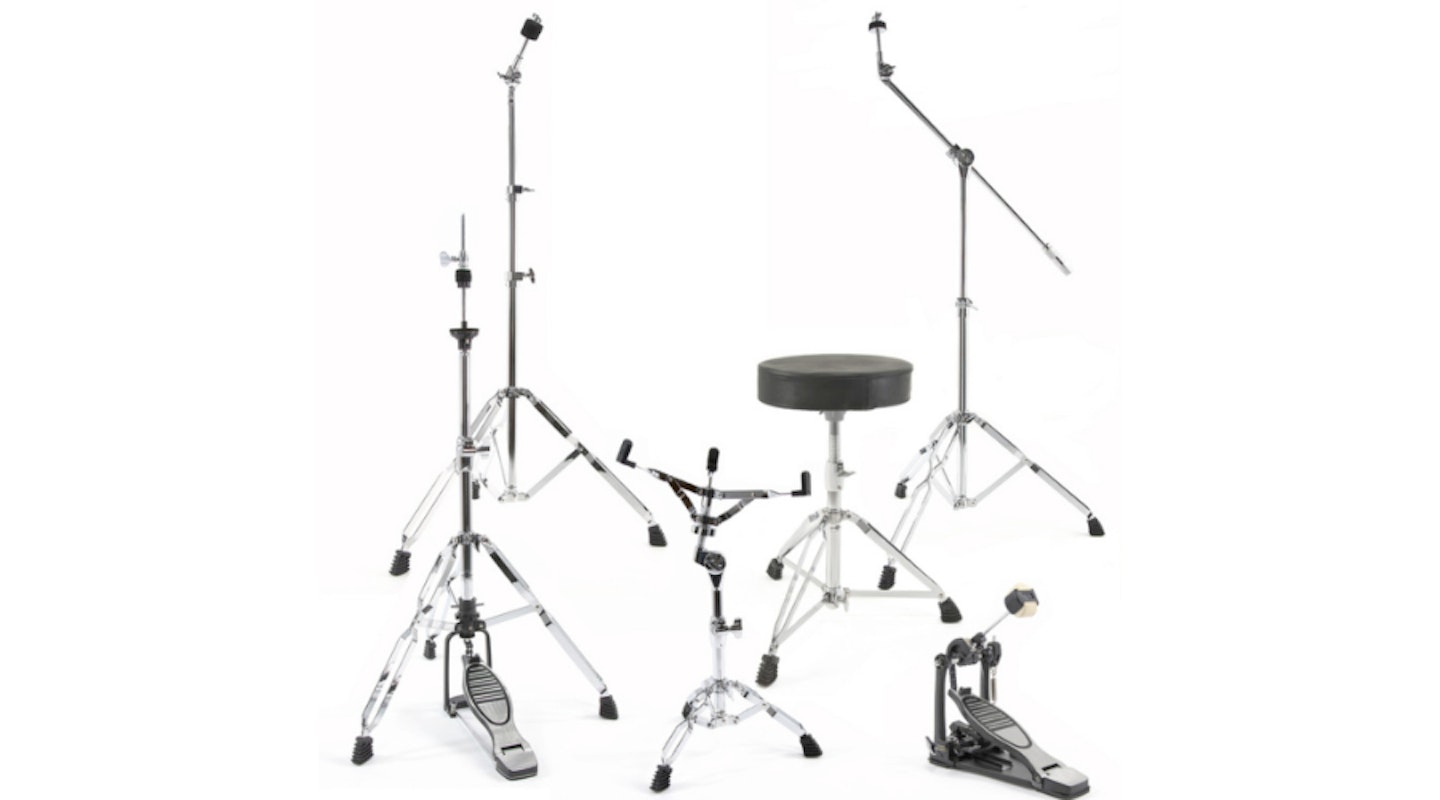
www.gear4music.com
The Complete Drum Hardware Pack by Gear4music features double-braced stands for hi-hat, snare, cymbals, and a reliable kick pedal and drum stool. Crafted with durable materials, the hardware offers stability, precise adjustability, and an ergonomic design. You can trust the hardware to ensure a solid foundation for your practice and performance.
Pros
- Reliable build
- Covers the essentials
Cons
- Only the basics
The best hardware pack overall
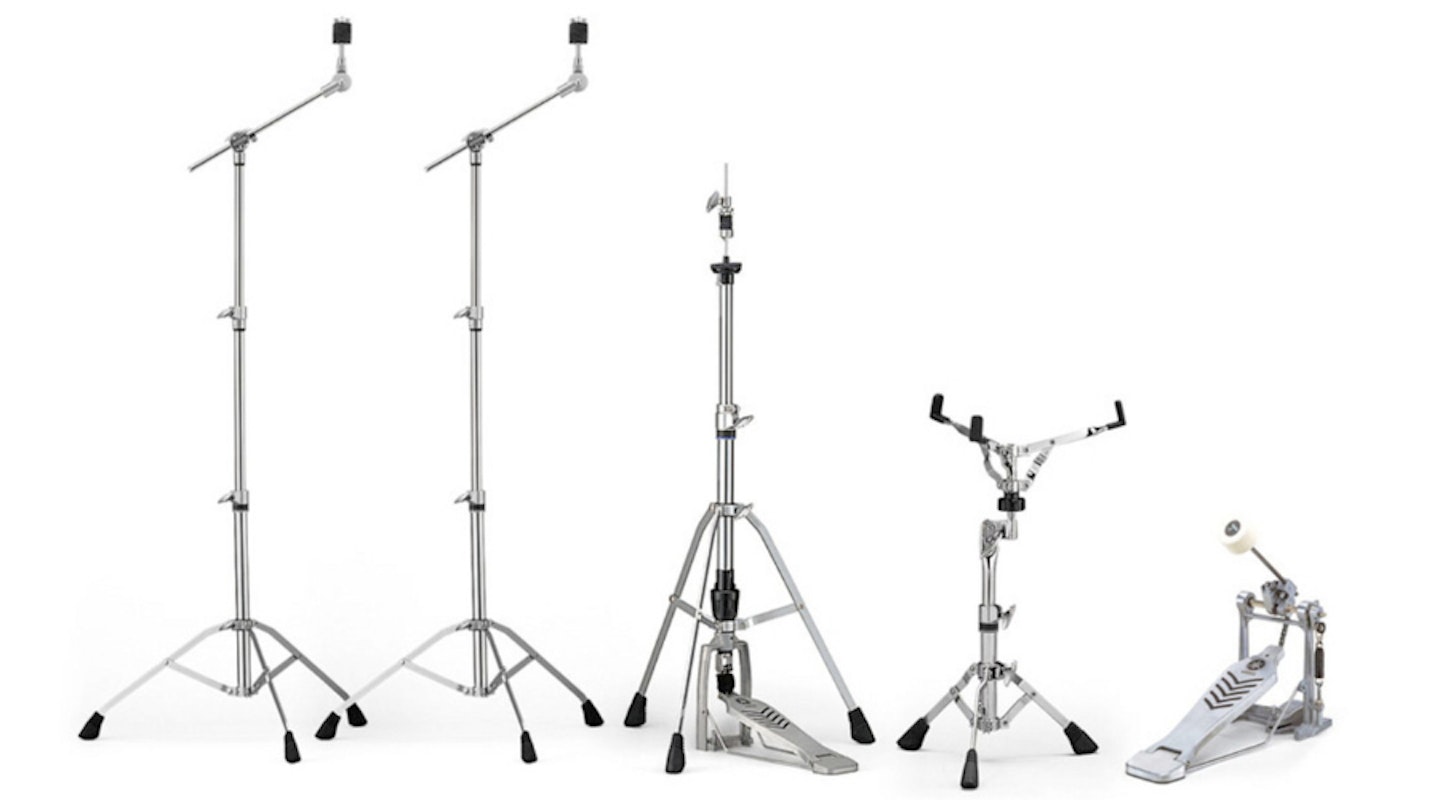
www.gear4music.com
The Yamaha HW780 Hardware Pack is a comprehensive set of drum hardware designed for durability and performance. The pack has a double-braced hi-hat stand, snare stands, kick pedal, and boom cymbal stands.
The hardware features sturdy construction, reliable functionality, and adjustability to suit your drumming setup. With its solid build quality and attention to detail, the Yamaha HW780 Hardware Pack offers a reliable and versatile hardware solution for your drum kits, ensuring stability and ease of use during performances and practice sessions.
Pros
- Durable construction
- Works on versatile kit sizes
- Easy to set up
Cons
- Cheaper options are available, though they are more basic
The best budget cymbals
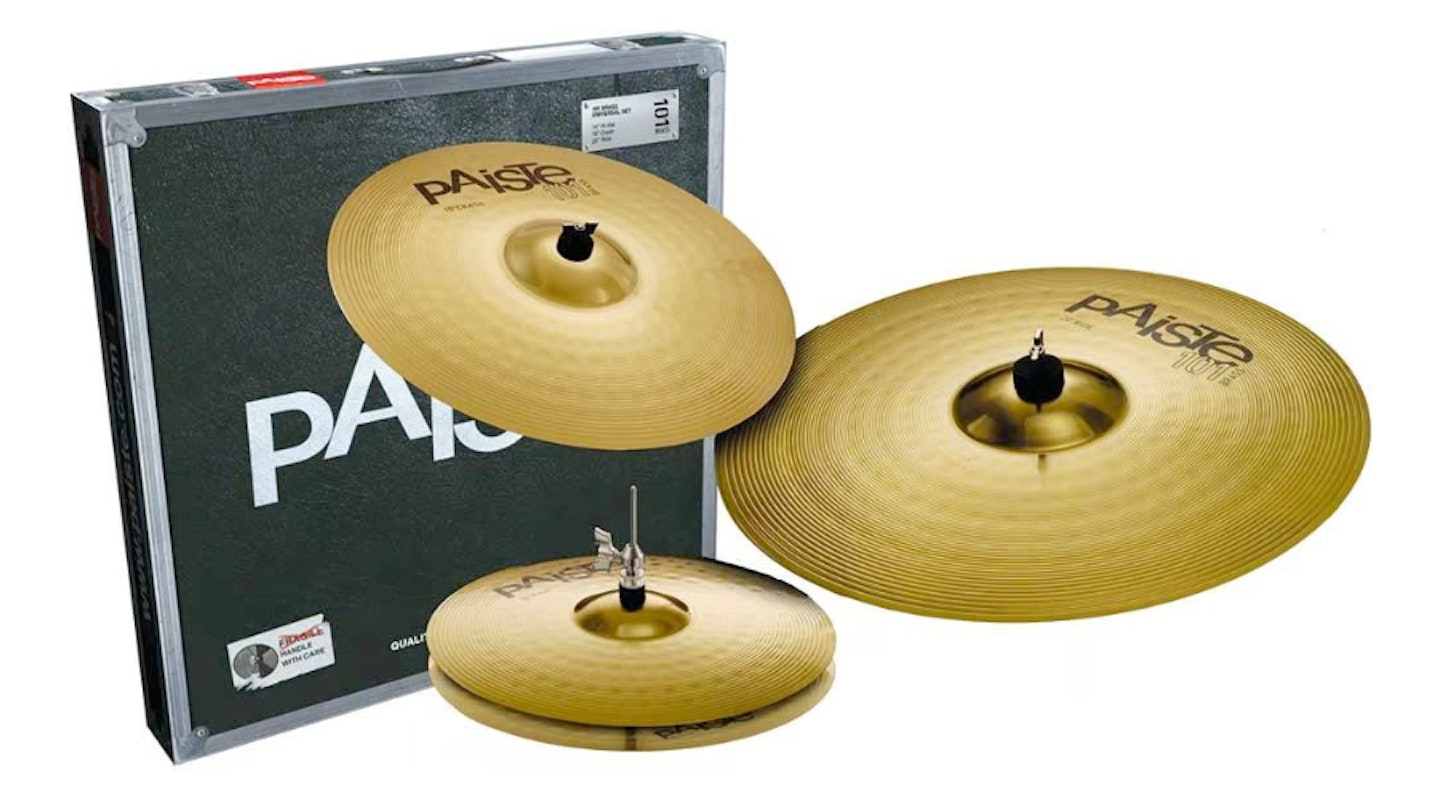
www.gak.co.uk
The Paiste 101 Brass Universal Cymbal Set is a budget-friendly option for drummers. This set includes a 14" hi-hat, a 16" crash, and a 20" ride cymbal. Made from brass, these cymbals offer a bright sound with decent sustain. While brass isn’t a premium material, it offers durability and acceptable sound quality, making these cymbals suitable for beginners and practice purposes.
Pros
- An affordable set for newcomers
- Bright sound
Cons
- Not as durable as more expensive sets
The best cymbals
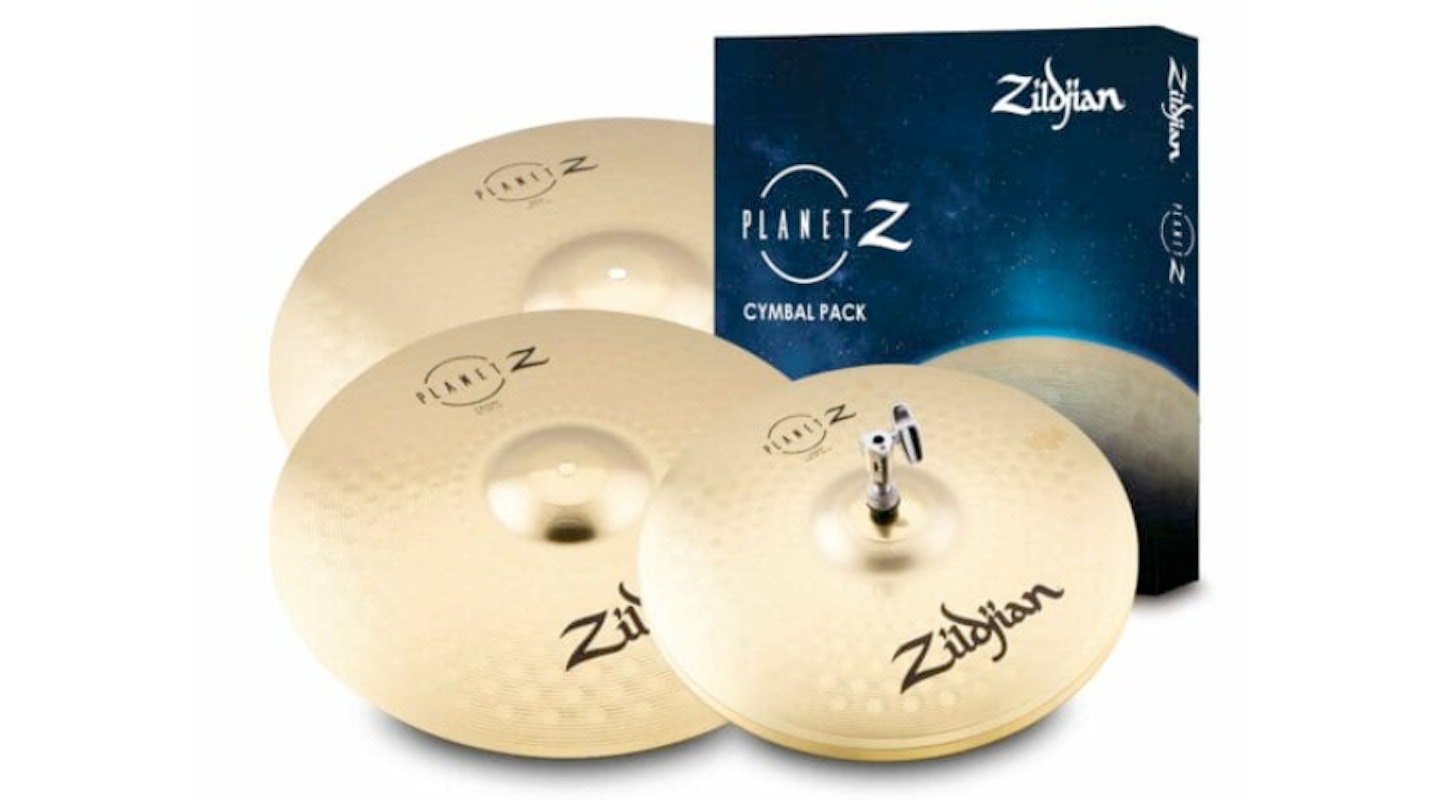
www.pmtonline.co.uk
The Zildjian Planet Z Complete Cymbal Pack includes a 20" ride cymbal, a 16" crash cymbal, and a pair of 14" hi-hats. The Planet Z series boasts bright and focused tones and a convenient solution for drummers looking to start their cymbal collection with reliable and balanced sound options.
Pros
- Very bright sound
- Detailed ride cymbal sound
Cons
- Expensive for newcomers
Drums 101
Bass drum: Also known as the kick drum, this is the largest drum in a standard kit. Played with a foot pedal, it provides the foundation of the rhythm section with a deep and powerful low-end sound.
Snare drum: A central component of the drum set, positioned between the drummer’s legs on a snare stand. It has metal snares or wires stretched across the bottom drumhead, producing a distinctive sharp and crisp sound when struck with drumsticks or brushes.
High tom: A smaller tom drum that can be mounted on the bass drum or a separate stand. It delivers a higher-pitched sound compared to the bass drum and snare drum. The high tom is often used in fills and melodic patterns.
Mid tom: Positioned between the high tom and low tom in terms of pitch. It offers a balanced tonal range and is helpful for fills, rhythmic patterns, and adding variation to drum grooves.
Low tom: Also known as the floor tom, is the largest tom drum in a standard kit. With its deeper and resonant sound, the low tom adds a heavier and more powerful impact, accentuating beats and providing depth to drum fills and patterns.
Cymbals 101
Hi-hat: A pair of cymbals mounted on a stand that can be opened and closed using a foot pedal. They produce a crisp ‘chick’ sound when played with the foot pedal or struck with a drum stick when closed, or deliver a pronounced sizzle if struck when open. The hi-hat is crucial for creating rhythmic patterns, adding accents, and maintaining a steady beat.
Crash: The medium-to-large cymbal that is often used to produce a loud, explosive sound. It provides a strong emphasis, typically used to mark transitions or to accentuate climactic moments.
Ride: The ride cymbal is a large versatile cymbal that is designed for “riding”, or playing a continuous rhythmic pattern. It has a defined, sustained sound with varying degrees of wash and shimmer. The ride cymbal can create grooves, keep time, and add texture to drumming. Drummers often use their bell or bow area to produce different tonal qualities and effects.
Cymbal metals:
A cymbal’s construction materials significantly impact its sound, durability, and overall performance. Here are some of the most common metals found in cymbal construction:
Bronze: This is the most common material for cymbals. It’s a mixture of copper and tin. Bronze cymbals are versatile and can produce a wide range of sounds, from bright and cutting to dark and warm tones.
Brass: Brass cymbals are made of copper and zinc. They are more affordable than bronze cymbals and tend to have a bright and cutting sound. Beginners often use them.
Nickel Silver: Nickel silver cymbals are less common but still used by some manufacturers. They have a bright sound like brass cymbals but with added complexity and overtones.
B20+: Some cymbal manufacturers create their own special alloys by adding different elements or using alternative compositions. These alloys can offer unique sounds and tonal options.
FAQ
Why does drum size matter?
The size of a drum plays a crucial role in shaping its sound, projection, and overall characteristics.
Tone and sound: The diameter and depth of a drum directly influence its fundamental pitch and tonal qualities. Smaller drums tend to produce higher pitches with a quick decay, while larger drums offer deeper tones with longer sustain.
Projection and volume: Larger drums, such as bass drums with 22" or 24" diameters, have a greater capacity to move air and thus produce a louder and more powerful sound. On the other hand, smaller drums may provide a more focused and controlled sound that is well-suited for quieter settings or specific musical styles.
Articulation and response: Smaller drums generally have a quick attack and shorter sustain, resulting in a more defined and focused sound. Larger drums offer a broader range of tones and a more sustained resonance. Drummers consider these factors when selecting drum sizes to match their playing style and the musical context.
Portability and setup: Smaller drums are typically more compact and lighter, making them easier to transport and set up in various venues or practice spaces. Larger drums may require more effort to move and set up, but they can deliver a bigger sound and presence on stage.
While drum size is a significant factor, it is important to remember that it is just one aspect of a drum kit’s overall sound. Other variables such as shell material, drumhead selection, tuning, and playing technique contribute to the final sound produced. Drummers often experiment with different drum sizes and configurations to find the ideal combination that suits their musical preferences and playing style.
Are electronic drums good?
Yes – electronic drums are good. In fact, electronic drums can be an excellent choice for drummers, and here’s why. First off, they’re a lifesaver when it comes to noise control. No more worrying about noise complaints – you can practise without disturbing your neighbours or family by using headphones or connecting them to a sound system.
Another great thing about electronic drums is their versatility. You can switch between different drum kits with the push of a button, from classic rock to electronic beats. Want to experiment with exotic percussion sounds or add some electronic effects? Electronic drums have got you covered.
They’re also fantastic for practising and honing your skills. Many electronic drum kits come with built-in metronomes to help you improve your timing, and some even have play-along tracks so you can jam along. The sound modules often make it easy to record your drumming sessions, too, letting you listen back to identify areas for improvement.
When it comes to performance and recording, electronic drums shine too. You can plug them directly into a sound system for gigs or connect them to your computer for studio recording. You have complete control over the mix and can add effects to spice things up.
Lastly, electronic drums are portable and space-saving. They’re lighter and more compact than acoustic drums, making them ideal for gigs, rehearsals, or small practice spaces. You can easily pack them up and hit the road without breaking your back.
Ultimately, electronic drums are a fantastic choice for drummers looking for versatility, noise control, practice features and portability. While they may not perfectly replicate the feel of acoustic drums, their unique advantages make them a popular option for many drummers.
BECOME A MOJO MEMBER today and receive every new issue of MOJO on your smart phone or tablet to listen to or read. Enjoy access to an archive of previous issues, exclusive MOJO Filter emails with the key tracks you need to hear each week, plus a host of member-only rewards and discounts.
